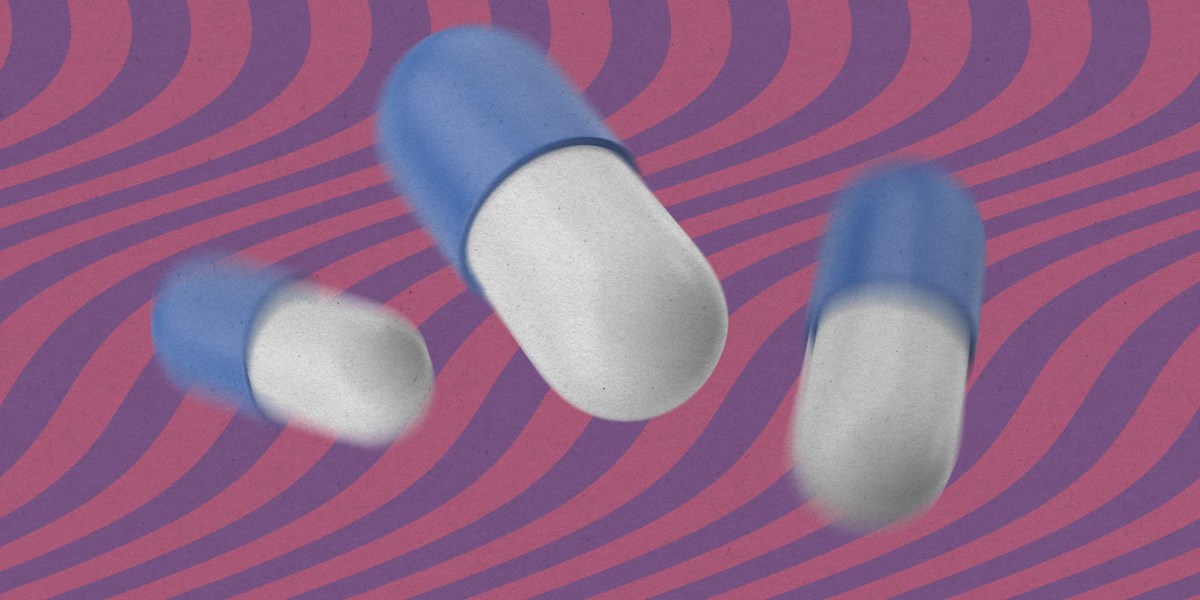Notifications
ALL BUSINESS
COMIDA
DIRECTORIES
ENTERTAINMENT
FINER THINGS
HEALTH
MARKETPLACE
MEMBER's ONLY
MONEY MATTER$
MOTIVATIONAL
NEWS & WEATHER
TECHNOLOGIA
TV NETWORKS
VIDEOS
VOTE USA 2026/2028
INVESTOR RELATIONS
COMING 2026 / 2027
ALL BUSINESS
COMIDA
DIRECTORIES
ENTERTAINMENT
FINER THINGS
HEALTH
MARKETPLACE
MEMBER's ONLY
MONEY MATTER$
MOTIVATIONAL
NEWS & WEATHER
TECHNOLOGIA
TV NETWORKS
VIDEOS
VOTE USA 2026/2028
INVESTOR RELATIONS
COMING 2026 / 2027
About Me
 Latinos Media
Latinos Media Latinos Media provides all types of news feeds on a daily basis to our Members
Posted by - Latinos Media -
on - December 22, 2023 -
Filed in - Technology -
-
8.6K Views - 0 Comments - 0 Likes - 0 Reviews

What if all you needed to lose weight were some good vibrations? That’s the idea behind a new weight-loss pill that tricks the brain into thinking the stomach is full, by stimulating the nerve endings that sense when the stomach expands.
The capsule, about the size of a large vitamin, houses a tiny motor that starts vibrating when it hits the stomach, stimulating the organ’s stretch receptors.
So far this “electroceutical” has only been tested in a handful of young Yorkshire pigs, but with promising results. According to a new paper in Science Advances, the six pigs that were given the pill ate 40% less than swine that received a placebo over the course of two weeks. That’s roughly what the team expected, but “we were very surprised when it had such a consistent effect,” says Shriya Srinivasan, a biomedical engineer at Harvard and one of the study’s authors. The pigs didn’t lose weight—they were still growing—but the animals that received the vibrating capsule didn’t gain as much weight as the control group.
The capsule, called the Vibratory Ingestible BioElectronic Stimulator (VIBES), mimicked the effects of a full stomach in other ways, too. After the pill started buzzing, insulin levels in the swine rose and levels of the hunger hormone ghrelin fell, just as they do when the stomach expands after a large meal.
Carlos Campos, a neuroscientist at the University of Washington who studies signaling between the gut and the brain, says the technology is impressive. “There’s quite a bit of engineering that went into making this vibrating pill,” he says. Here’s how it works: When the capsule hits stomach acid, the outer gelatinous membrane dissolves, releasing a spring-loaded pogo pin that completes an electrical circuit. That pin activates a battery-powered motor that drives the vibrations, which last for about half an hour. The vibrations trigger the stretch receptors, which give the brain “an illusory satiety effect,” Srinivasan says. And if you feel full, you might eat less.
Even with new, more effective weight-loss medications, Campos says, there is still a need for new therapies to address the obesity epidemic. Wegovy and Zepbound injections are expensive, and studies suggest people will need to take them indefinitely to keep the weight off. “With mechanical stimulation, you can decide when to use it, when not to use it. You have a lot better control of how the stimulus is given,” he says.
But there’s a caveat, Campos says. You can’t dupe the brain forever. If it decides those stretch signals aren’t a reliable cue for how much food was consumed, “then the brain might start to use other signals to decide how much to eat,” he says. “We don’t know how long that trick is going to work.”
The researchers envision that people would take the VIBES pill about 20 or 30 minutes before each meal. In pigs at least, the capsule seemed safe, vibrating at a level that Srinivasan said was gentler than an electric toothbrush. “We didn’t see any nausea, vomiting, bloating—nothing like that,” she says. But the experiment didn’t entirely mimic the way VIBES might be used in humans. Pigs are bad at swallowing pills without biting or chewing, so the researchers placed the pill in the animals’ stomachs through a feeding tube. The capsules were tied to an external battery and activated before the pigs got their twice-daily serving of food pellets.
If this ever makes it to humans, people would be ingesting multiple bioelectric capsules each day. The animals managed to safely clear a single capsule in four days, on average, but “we don’t know what the effect will be in humans,” Srinivasan says. The pills might pass through the body faster.
Srinivasan hopes they might be able to test that in a year or two. The VIBES technology doesn’t use any expensive materials, so the team expects it could be mass-manufactured for a dollar or less per pill. “The fact that it is a pill makes it accessible to the populations of the world that can’t afford these other more invasive or costly options that usually are acquired with implants or surgeries,” she adds. “I think it would be extremely affordable for the masses.”